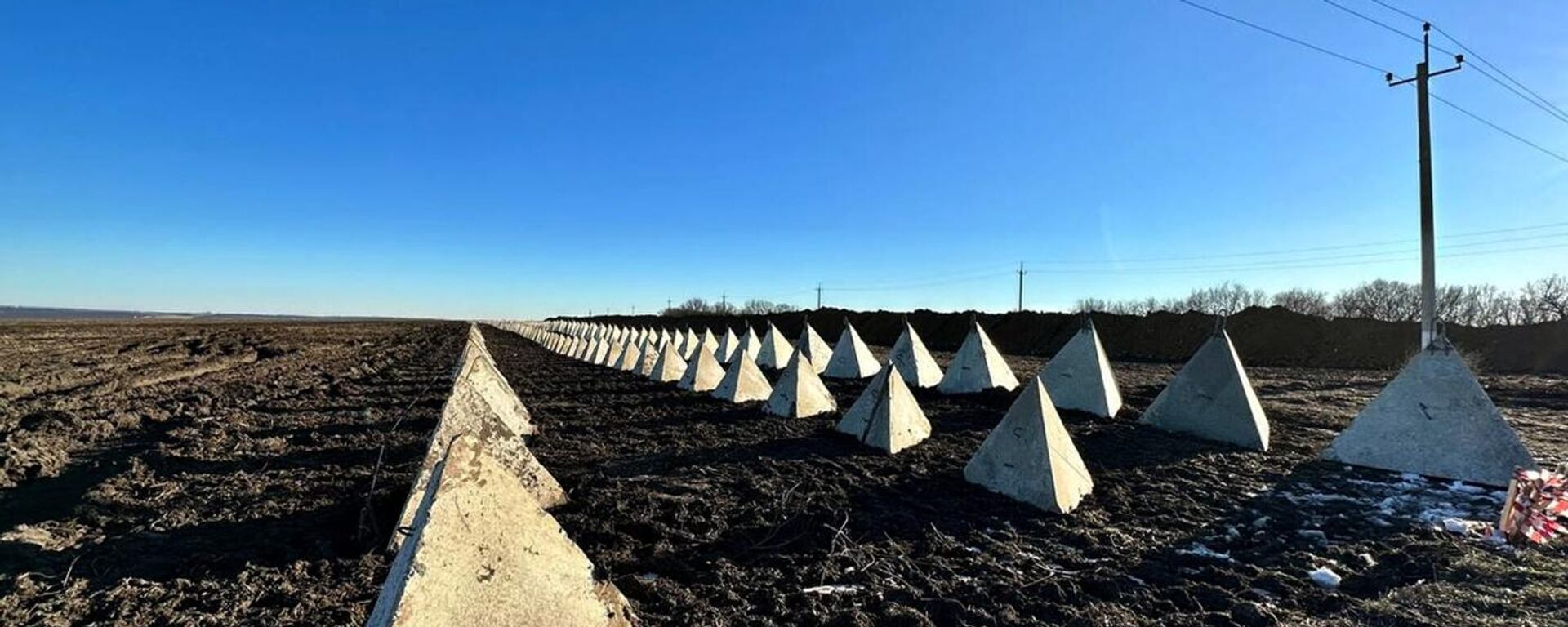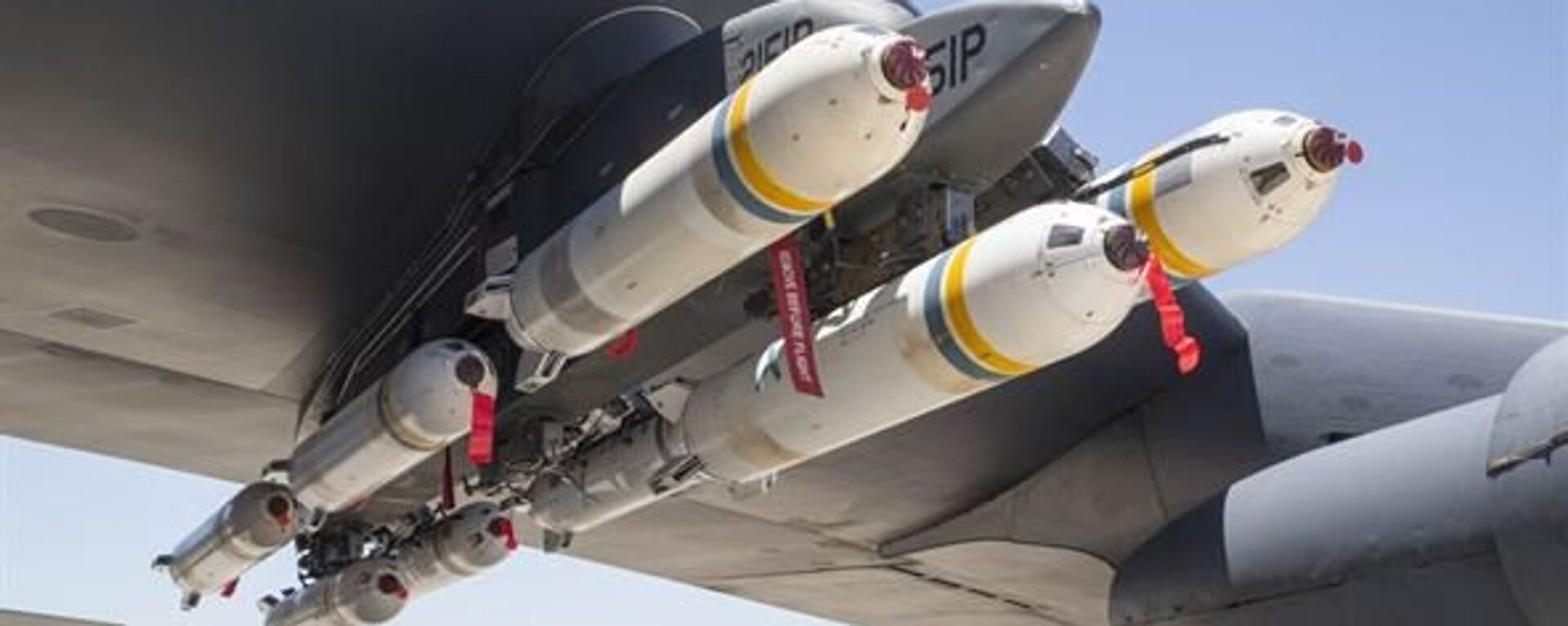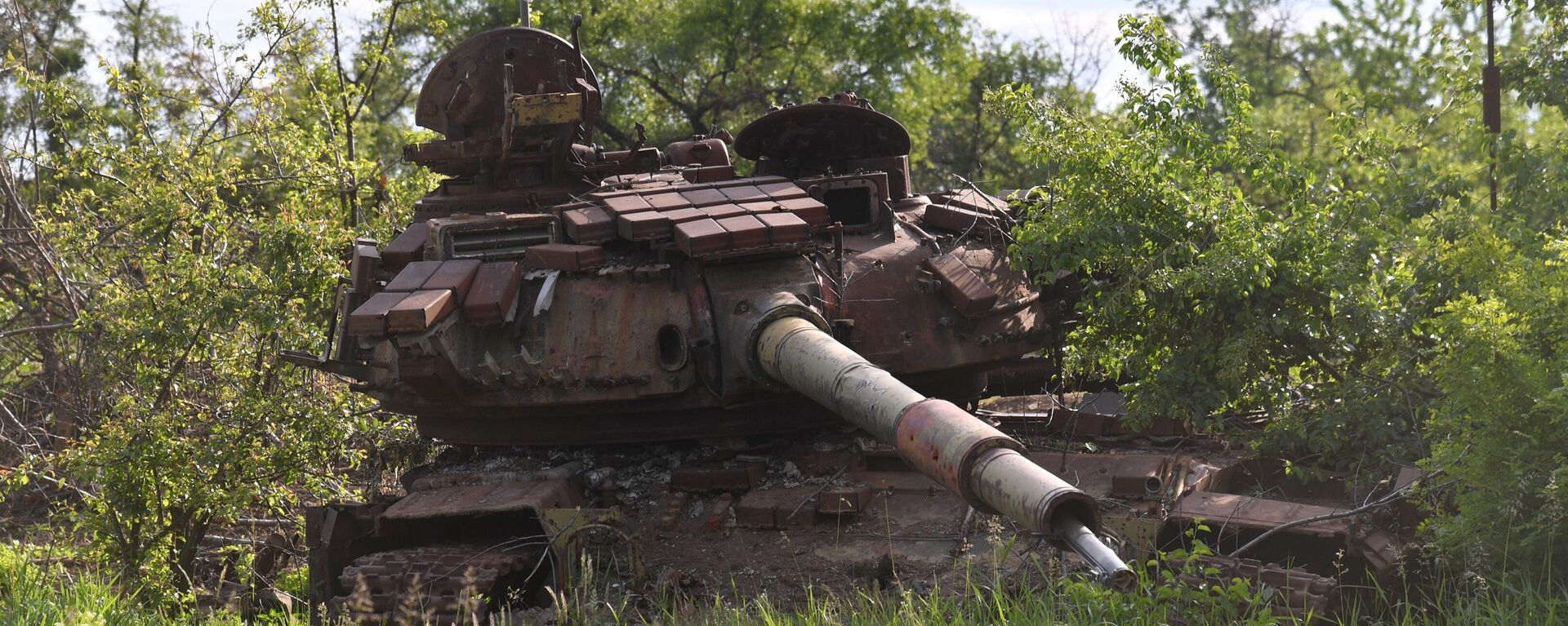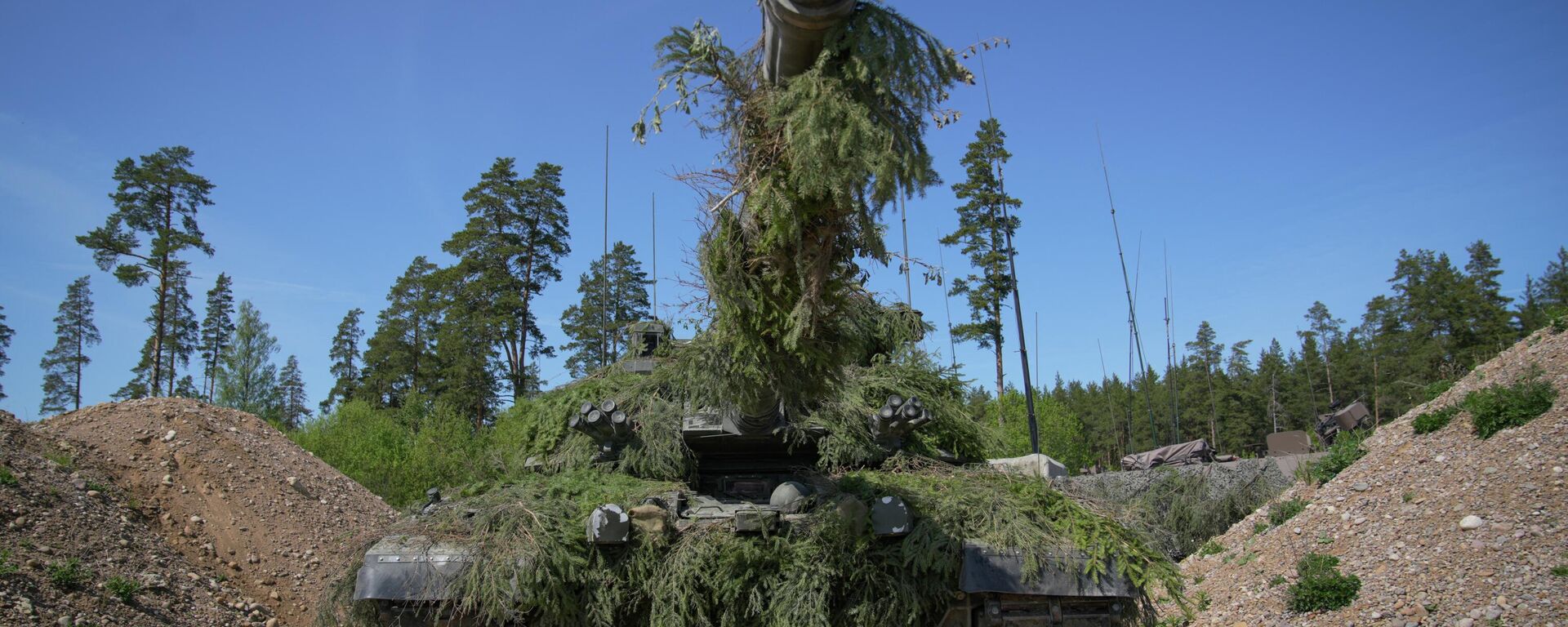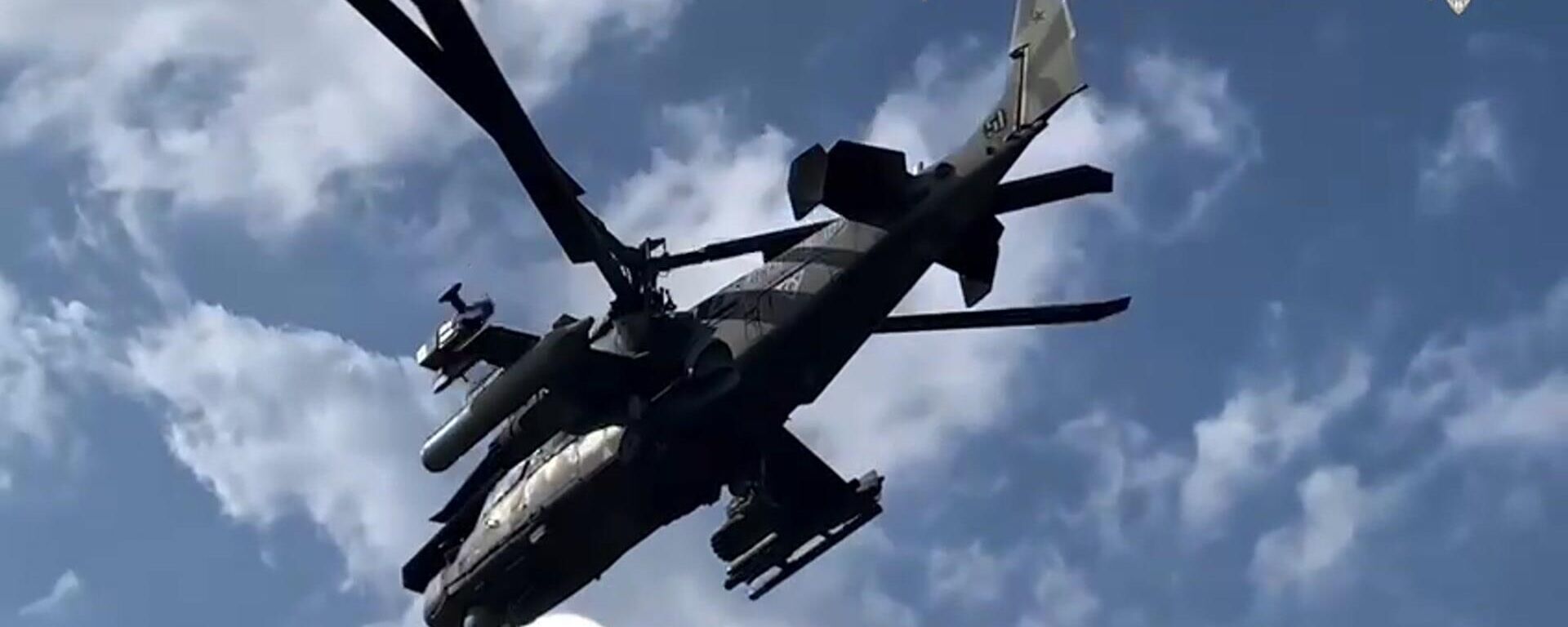Scott Ritter: Ukrainian Counteroffensive’s Last, Desperate Push

© Sputnik
/ Subscribe
Recent Ukrainian attacks in against the villages of Rabotino and Verbovoe will only lead to further attrition of Kiev’s forces, Scott Ritter, former US Marine Corps intelligence officer and UN weapons inspector, told Sputnik's New Rules podcast.
Ukraine is gaining ground in its counteroffensive started in June, claimed NATO Secretary-General Jens Stoltenberg on Thursday, addressing lawmakers at the European Parliament. Does that mean Ukraine has finally achieved a breakthrough after nearly four months and heavy casualties?
"To answer that question, we have to know what the goals and objectives of the current phase of the Ukrainian counteroffensive are," Scott Ritter, a military analyst and former US Marine Corps intelligence officer, told Sputnik.
"We know that when they initiated this counteroffensive back in early June of this year, the goals were quite clear: to break through the first line of Russian defenses, the second line of Russian defenses, seize the town of Tokmak, and then use that as a launching point to penetrate deeper through the Russian defenses to seize the city of Melitopol, which would enable them to sever the land bridge between Crimea and Russia and bring Crimea under direct attack, That was the stated objective put forward by General Zaluzhny, echoed by President Zelensky and other Ukrainian officials," the military expert continued.
However, these objectives have not been reached so far, per Ritter. Presently, the Ukrainians are claiming that they have put infantry units beyond the so-called "dragon's teeth", the concrete obstacles that constitute the first line of Russia's defenses. In particular, the Kiev regime says its forces managed to take the villages of Verbovoye and Rabotino in the Zaporozhye region.
Still, the Russian Ministry of Defense made it clear on September 7 and 8 that the Russian forces are continuing to successfully repel attacks by the Ukrainian Armed Forces in the areas of the settlements. As Russian military blogger Rybar remarked on his Telegram account: it's the best way "to turn Rabotino into a continuous conveyor of death for Ukrainian units."
"The village of Rabotino was always meant to fall. If the Ukrainians put sufficient military power in a specific zone of operations, they should be able to advance and seize terrain that the Russians have decided will be defended, but not to the death. Rabotino was always meant to be part of the crumple zone in the fire element, defensive zone of the first line of defense. The purpose of Rabotino was to help break up the Ukrainian attacks, and it has done this magnificently," said Ritter.
What's Russia's New Defensive Doctrine?
What's actually going on in Rabotino and Verbovoe is part of a new Russian defensive doctrine, explains the former Marine intelligence officer.
"Russia always had a primarily defensive doctrine inherited from the Soviet times. But this new defensive doctrine that's being implemented, especially in the Zaporozhye front, is the brainchild of Lieutenant General Alexander Romanchuck, former deputy commander, I believe, of the 58th Combined Arms Army. He was sent to the Combined Arms Academy after participating in the early phases of the Special Military Operation. While he was at the Combined Arms Academy, he rewrote Russian defensive doctrine and then he was brought out of the Combined Arms Academy and given a leadership position in the Zapporozhye front in the Rabotino area."
In accordance with the doctrine, "the purpose of the forward defensive zone is to receive an enemy attack to help break it up, to use defensive belts, minefields, obstacles, what they call, 'fire cauldrons' or 'sacks' where you want to force the enemy to come in so you can hit them with artillery, to break up the attack, but not to hold and die," explained Ritter.
"That is, as the enemy presses forward, the idea is to minimize your own losses by withdrawing back to prepared positions and continuing to bring the enemy under increasing levels of firepower from the air, from artillery, from anti-tank guided missiles, etc., all the while bogging them down with minefields, other obstacles. The first line of defense is not meant to be the Alamo. That's a reference to an American battle back in 1836, when the Mexican army stormed a Texan defensive position, the Alamo, and the Texan defenders fought and died there. That's not what the Russians are doing."
Once Ukrainians achieve localized superiority, Russians will withdraw and continue to grind the enemy forces further. The irony of the situation, according to Ritter, is that the first line of defense is meant to be broken by the Ukrainians, at a time and place, determined not by the Ukrainians, but by the Russians who've been shaping the battlefield from the outset of Kiev's botched counteroffensive.
"Even if the Ukrainians have succeeded in penetrating the first line of Russia's defense, this is done by design. This is not the final battle. They would still need to exploit this breach. Move on to the second line of defense where they'll come under even increasing intensity of attack."
That is, even if the Ukrainian military takes a couple of villages here and there it does not mean any breakthrough, but rather a beginning of the end of Kiev's counteroffensive.
Why is Russia's First Line of Defense a Death Trap?
Russia has forced the Ukrainian military to burn through their reserves and ammunition while storming the first line of defense, according to Ritter.
"This is what we need to understand. At this point in the fight, Ukraine has committed its strategic reserve, the final core three brigades that they had been holding back. This was the exploitation force. This was the force that was supposed to be committed into the battle when [the town of] Tokmak, which is behind the second line of defense, fell to the Ukrainians. This was the force that was supposed to push through the Russian defenses and seize the city of Melitopol, completing the objective. The strategic reserve is being committed because the initial wave of the attack, the follow-on attack, have all failed to break through the defensive zone in front of the first line of defense."
Exhausted by struggling to overcome Russia's defense lines, the Ukrainians will have no strength left to push on forward, said Ritter. "This is part of Alexander Romanchuck's defensive concept, and it's been executed perfectly by the Russians at Rabotino," he stressed.
Why are Ukrainians Pushing Forward Despite Failing to Make Progress?
"This is a political question that can only be answered by the Ukrainians," said Ritter.
Per the military analyst, Kiev wants to demonstrate to the West that the billions of dollars of assistance have not been given in vain and that if Ukraine asks for military assistance, it will effectively use this military assistance to further not only Ukrainian objectives, but NATO's objectives as well.
However, the problem here is that Kiev and NATO's objectives aren't necessarily identical, the US military veteran highlighted.
While Ukraine's objectives include the physical reconquest of territory Ukraine believes belongs to it, NATO's goal is not so much about achieving decisive military victory on the battlefield, but to inflict pain on Russia to an extent that there could be a "Moscow Maidan", akin to one that happened in Kiev in 2014, Ritter explained.
"NATO, and we hear this over and over again in the rhetoric of American politicians, whether it be Senator Lindsey Graham or we have Nikki Haley running for office, we have others out there echoing the same thing, that the expenditure of US taxpayer money in support of Ukraine is money well-spent because we're killing Russians, and no Americans are dying. Now, what's left out of this perverse equation is the Ukrainians who are dying. But for the United States and NATO, it simply doesn't matter."
One should bear in mind that NATO isn't here to help Ukraine achieve a military victory: "NATO's here to use Ukrainian lives as chips in a gambling game designed to hurt the Russians," the military expert emphasized.
Who is to Blame for Ukraine's Failing Counteroffensive?
While one cannot absolve Ukraine of its responsibility for the unfolding havoc – given that Volodymyr Zelensky could have ended the conflict back in March 2022 following Russo-Ukrainian peace talks in Istanbul – one cannot absolve NATO, either, according to Ritter.
"Let me make it clear here. This counteroffensive was never going to work. Ever. General Christopher Cavoli, the commander of US forces in Europe and the Supreme Allied Commander of ground forces, when he spoke to a Swedish Defense Forum in January of this year, spoke of the conflict taking place, this was a pre-counteroffensive conflict, pre-battle of Bakhmut conflict, he said the scope and scale of the violence taking place in Ukraine today is beyond the imagination of NATO. (…) So when he says that what's happening in Ukraine is beyond the imagination of NATO, it means he's saying that NATO is not prepared for this kind of war and NATO isn't prepared for this kind of war."
Per the former Marine intelligence officer, the crux of the matter is that the Pentagon and NATO commanders have never conducted "combined arms warfare" in their career, having spent the last 20 years involved in "low-intensity conflict operations" in Iraq, Afghanistan, Syria and elsewhere. As a result, American officials, NATO officials, American officers, NATO officers are trying to teach Ukrainians about a doctrine – combined arms warfare – which they themselves are not masters of.
"The answer is, NATO itself has a paper tiger that for the last 20 years has not been funded properly. They haven't been training properly. They've not been doing the right kind of defense procurement properly. And there's not a single military today that's healthy enough to carry out the kind of combat that's taking place in Ukraine, let alone transfer equipment to the Ukrainian military that could assist them in doing this kind of warfare."
Insufficient training, Ukraine's change of military doctrine and style of weaponry "in mid-race", and lack of resources also contributed to Kiev's defeats, according to the military expert.
"The Ukrainians are just not up to the task. NATO knew it. And so therefore, at the end of the day, the majority of the blame goes to NATO for encouraging Ukraine to do something that NATO knew Ukraine couldn't accomplish. But again, I come back to what I said before. NATO doesn't want Ukraine to win on the battlefield. They just want Ukraine to hurt the Russians enough to get Russia to quit."
What's the End Game?
Ritter noted that Ukraine's botched counteroffensive appears to have brought NATO commanders from their fantasy world – in which Russia is "weak" and its military is "failing" – back to the ground.
"I think what's happening with this counteroffensive failing right now is that the reality is being changed in the Pentagon. For the first time, you're starting to hear Pentagon officials talk about Russian competence. They're acknowledging grudgingly, but acknowledging that the Russians have prepared a very effective defense. They give most of the credit to mines, trees and shrubs. That's serious. That's what they were saying."
"But the reality is the Russians are not yielding. I mean, if one only takes a look at the example of the Alyosha tank, that famous tank, that charged forward, one against eight, and then sort of a legend has appeared around it. Look at the composition of troops, contract soldiers, volunteers, mobilize troops coming together and operating with dedication, with a sense of self-sacrifice, with discipline, with courage."
The Russians turned out to be very good and this fact disrupted NATO's gambit, according to Ritter. He noted that "there's a whole new reality setting in in the West about the impossibility of achieving their goals and objectives" in Ukraine; and now the West is facing a dilemma of how to mitigate the consequences of the imminent defeat.
"If you stop the conflict now, we can pretty much define what the borders are going to look like. But if you allow this conflict to go forward, the question of what the final configuration of the Ukrainian state is up in the air. And so I think in the West right now, there's a lot of talk about, 'how do we get ourselves out of this?' But it has to be done in a way that doesn't pull the rug totally out from under the feet of the Ukrainians. Because if you get too far ahead and when talking about the capitulation as the endgame, there's not much left for the Ukrainian troops to fight. And you might find that collapse will be the endgame," Ritter concluded.

